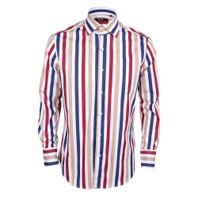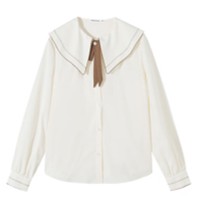Shirt Size Chart
About Shirt Size Guide Chart
How to choose shirt size according to body shape ?
Choosing the right shirt size according to your body shape ensures a comfortable and flattering fit. Here’s a step-by-step guide to help you pick the best shirt size based on your body type:
1. Measure Your Body Accurately.
Neck: Wrap a tape measure around the base of your neck (leave room for one finger to fit snugly).
Chest: Measure around the fullest part of your chest (under the armpits).
Waist: Measure around your natural waistline (narrowest part, usually above the belly button).
Sleeve Length: From the center back of your neck to your shoulder, then down to your wrist.
Torso Length: From the base of your neck to your waistline (for untucked shirts).
2. Match Measurements to Shirt Size Charts.
3. Consider Your Body Shape & Fit Preference.
A. Slim / Ectomorph Body.
Fit: Slim-fit or tailored-fit shirts avoid excess fabric.
Key Areas: Ensure shoulders fit snugly (no sagging), and waist isn’t too loose.
B. Athletic / Mesomorph Body.
Fit: Regular fit or athletic-fit (broader shoulders, tapered waist).
Key Areas: Chest and shoulders should fit comfortably; avoid tight armholes.
C. Stocky / Endomorph Body.
Fit: Classic fit or relaxed fit for comfort around the midsection.
Key Areas: Ensure enough room in the waist; consider "big & tall" sizes if needed.
D. Tall or Short Torso.
Tall: Look for "tall" sizes (longer sleeves & torso).
Short: Opt for "short" sizes or brands offering adjustable lengths.
4. Try Before Buying (If Possible).
Collar: Should allow one finger to fit comfortably when buttoned.
Sleeves: Cuffs should reach the base of your thumb when arms are relaxed.
Length: Tucked shirts should stay in place; untucked shirts should cover the belt.
5. Adjust for Fabric & Style.
Non-Stretch (e.g., Cotton Dress Shirts): May need a more precise fit.
Casual vs. Formal: Casual shirts can be looser; formal shirts should be trimmer.


